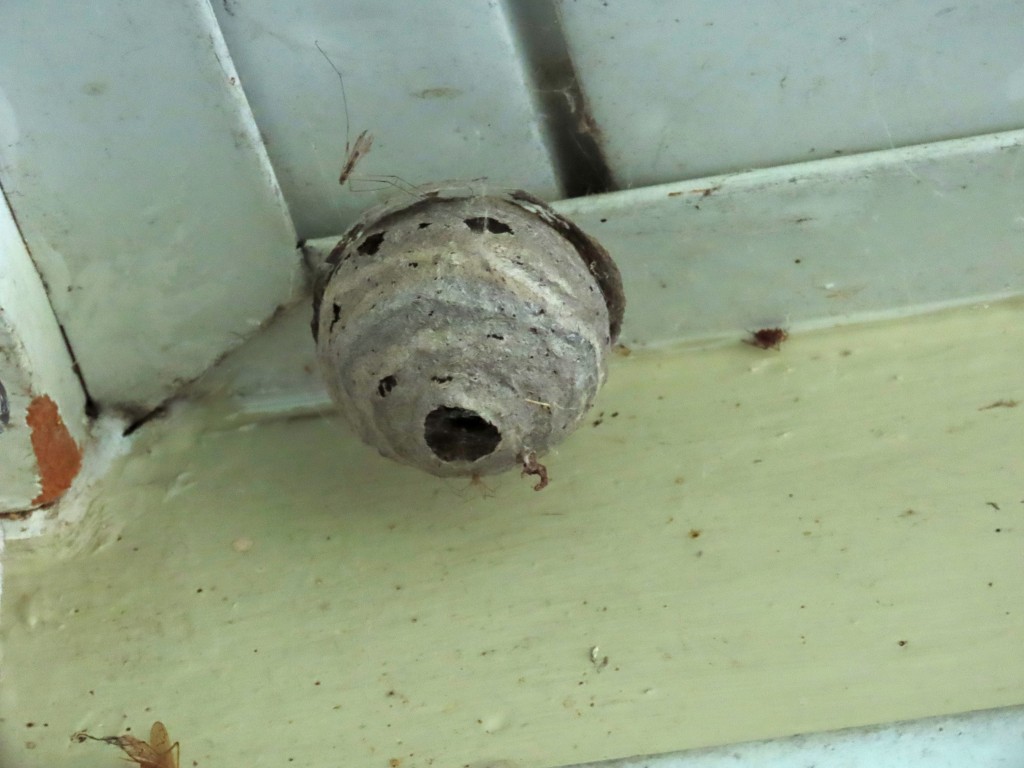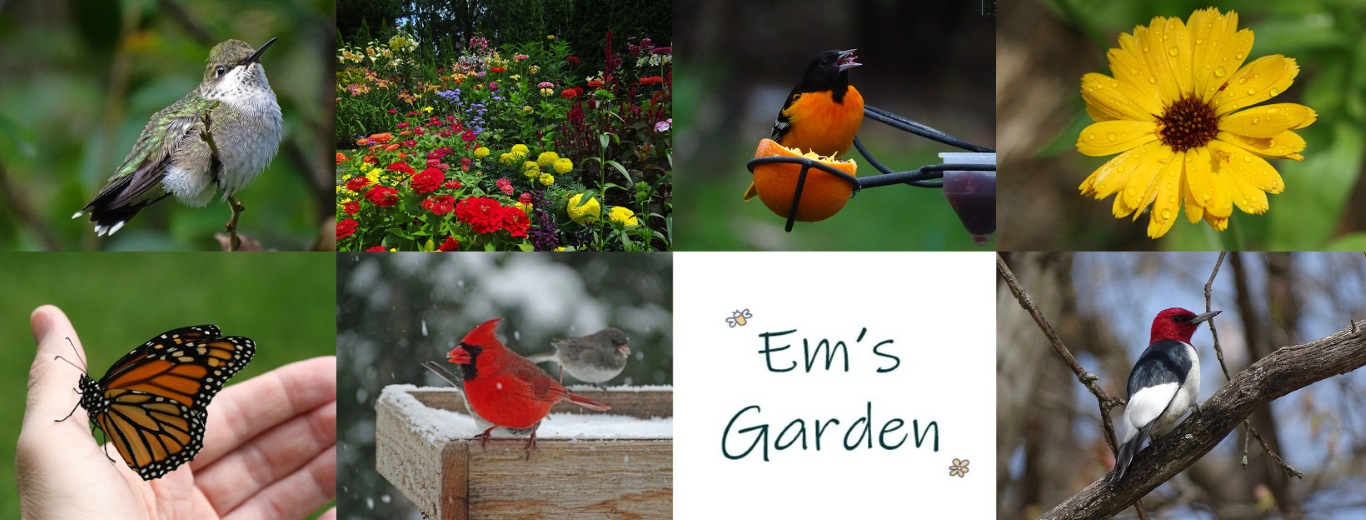My husband disturbed a nest of Yellowjacket wasps recently and got stung about 8 times on his face and neck. Thankfully he’s not allergic to them and I was at home at the time to help him get away from the attackers and treat the stings right away.
The wasps poured out of the nest when he passed by with a string trimmer after mowing. The vibration from a trimmer or mower can make Yellowjackets think the nest is under attack.
Last month I noticed there were Yellowjackets trying to get into my hummingbird feeders for the sugar. I just didn’t know where they were coming from. They can forage hundreds of yards away from a nest. In our case the nest was just a few feet from the east side of our house.
Of course my husband became a lot more cautious about wasps after being stung, so when he found this on our house last weekend, he grabbed a can of wasp spray and was about to go to battle.

I asked him to hold off until I could do a little research. This little mud nest was made by a mud potter wasp. They are non-aggressive and solitary and don’t defend their territory like Yellowjackets do.
The nest is built 1-2 inches wide with a single entrance at the front. The adult female wasp builds the nest, fills it with food (usually other insect larvae or paralyzed caterpillars) for a single larva and then seals the entrance with more mud. When the larva is big enough, it chews an exit hole and escapes. That’s the escape hole you see on the bottom of the nest in the photo.
So not only are these wasps not a threat to anyone, but this one had already left.
Nature never ceases to amaze me. An insect made that little pot with no tools, just instinct and determination. And only for a single offspring! What at first looked like something to fear turned out to be a small work of art, quietly reminding us that even the smallest creatures have stories worth learning.
